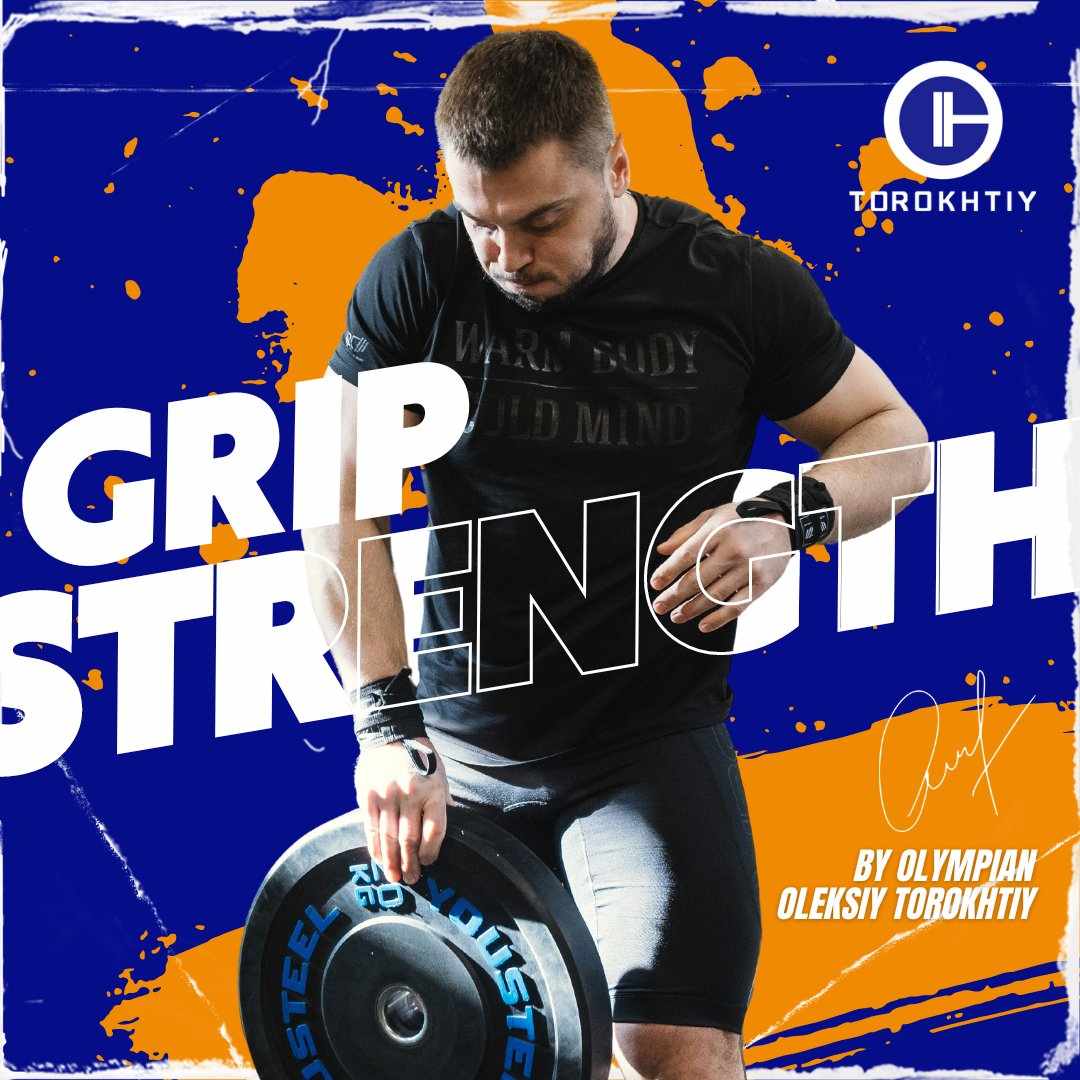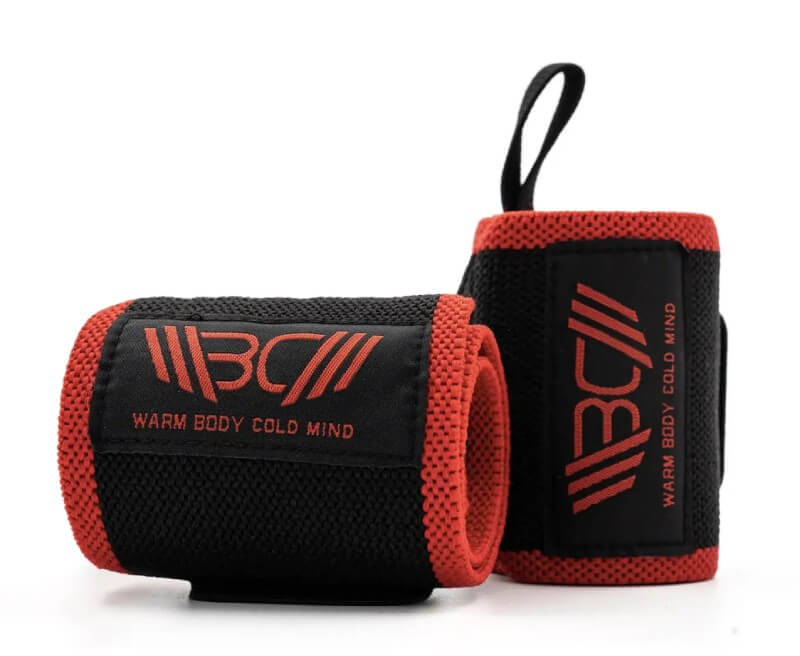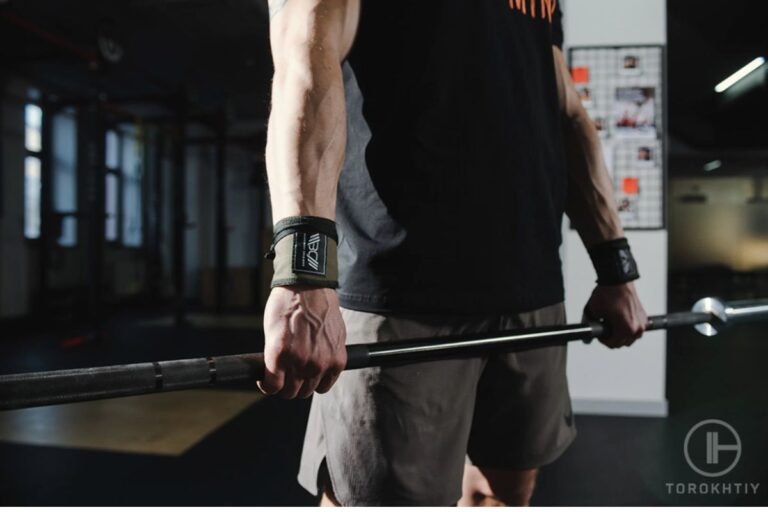Bench Press Wrist Pain: Reasons, Symptoms, Prevention
Wrist pain from bench press is not a rare phenomenon. In fact, many lifters often complain about wrist pain from benching and are looking for ways to get rid of it. That’s why we’ve decided to dedicate today’s article to wrist pain from bench – why it happens, what you can do to prevent it, and which products might be helpful.
Having said that, if you’re feeling frequent, intense or worsening pain, you should immediately consult with your doctor.
There are a few ways to minimize wrist pain when lifting. The first one is to strengthen your wrist; then, it’s ensuring that you’re using proper technique and form while also not trying to lift more than you’re ready for. Lastly, wearing wrist wraps will help you stabilize the wrist and prevent frequent pain and injuries.
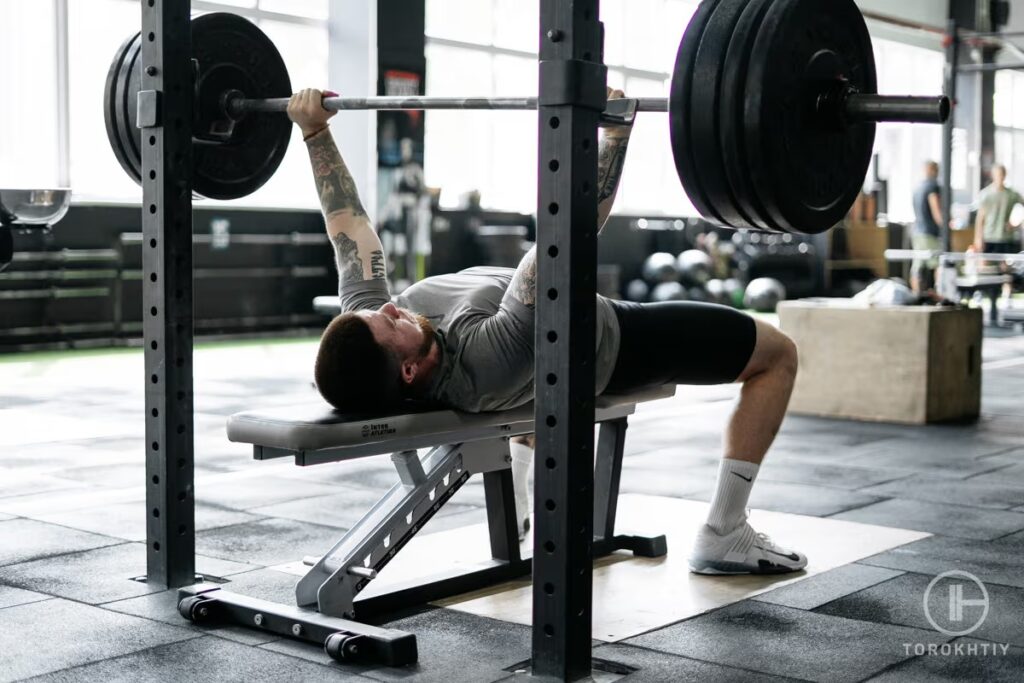
Wrist Anatomy During Bench Press
We all know lifters who complain their wrist hurts after bench press. It is most often in those athletes who lift extremely heavy weights or lift very frequently.
It may occur not only while lifting but also after finishing the workout, and during other lifts/activities. Now, you might be wondering why that happens. For us to fully understand, let’s start with the wrist anatomy and how it functions during the bench press.
You can think of the wrist as the connection point between your forearm and your hand. As such, it plays a crucial role in many everyday activities and different types of exercises. The wrist has a few main motions, including flexion, ulnar deviation, radial deviation, extension, and circumduction. Let’s take a look at what all those terms mean:
- Wrist flexion wrist bending in the same direction as your fingers, so your palm gets closer to your bicep.
- Wrist extension is wrist moving/bending in the direction of finger straightening.
- Ulnar deviation is sideways wrist bending towards the pinky side of your hand.
- Radial deviation is bending towards your thumb side.
- Circumduction of the wrist is a circular motion combining flexion, extension, and radial and ulnar deviation.
Typically, while bench pressing your wrist should remain in a mild-moderate amount of extension and lined up over the forearms. And so, if you have excessive extension or radial deviation (usually from a very wide grip), it can lead to you complaining that your wrist hurts when benching.
The bench press can be broken down into several phases:
- Set Up
- Lowering phase or Eccentric phase
- Lifting phase or Concentric phase
- End phase
Let’s take a deep dive into each one of those phases.
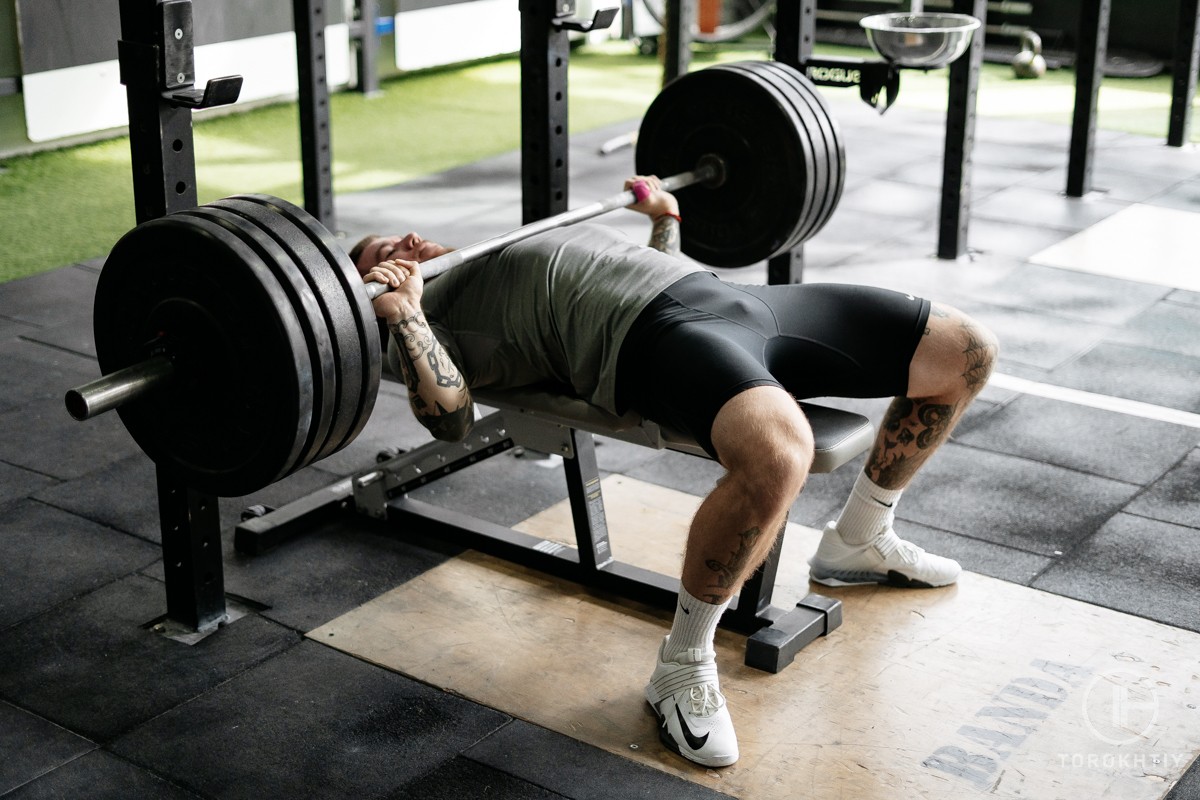
1. Starting Position / Set Up
In the starting position, you should be lying down on the bench with your feet firmly planted on the ground and your eyes looking up. From there, you should place the bar in the middle of your palm and directly over your forearm so that you can transfer power up the arms and to the bar.
Then wrap your fingers around the bar and grasp it with the wrists set under the bar while being about shoulder width apart or slightly wider. An arch in the back is safe and very helpful for maximum strength, but not necessary for bodybuilding. From there, unrack the bar, and move it over your chest.
2. Lowering Phase / Eccentric Phase
Lower the bar down until it touches your sternum (the bone in between your pecs). Control your movement, do not lower the bar too fast, this will make timing and maintaining positioning much harder. Do not bounce the bar off your chest at the bottom.
3. Lifting Phase / Concentric Phase
While exhaling push the barbell upwards and lock out your arms at your starting position. This means laying on the bench with flat feet on the ground and hips on the bench. An arch in the back is still alright, but do not let your hips lift off the bench. Your bar should be at eye level.
4. End Phase
This phase is just pushing the bar backwards until it is all the way into the rack/hooks then lowering it down safely.
If you perform the exercise correctly, the likelihood of you getting a wrist injury from bench press is minimal. However, if not, you may start to experience some wrist pain while bench pressing.
Common Bench Press Wrist Pain Symptoms
Not all wrist pain is the same, and there are different symptoms you may notice. Let’s discuss them in detail.
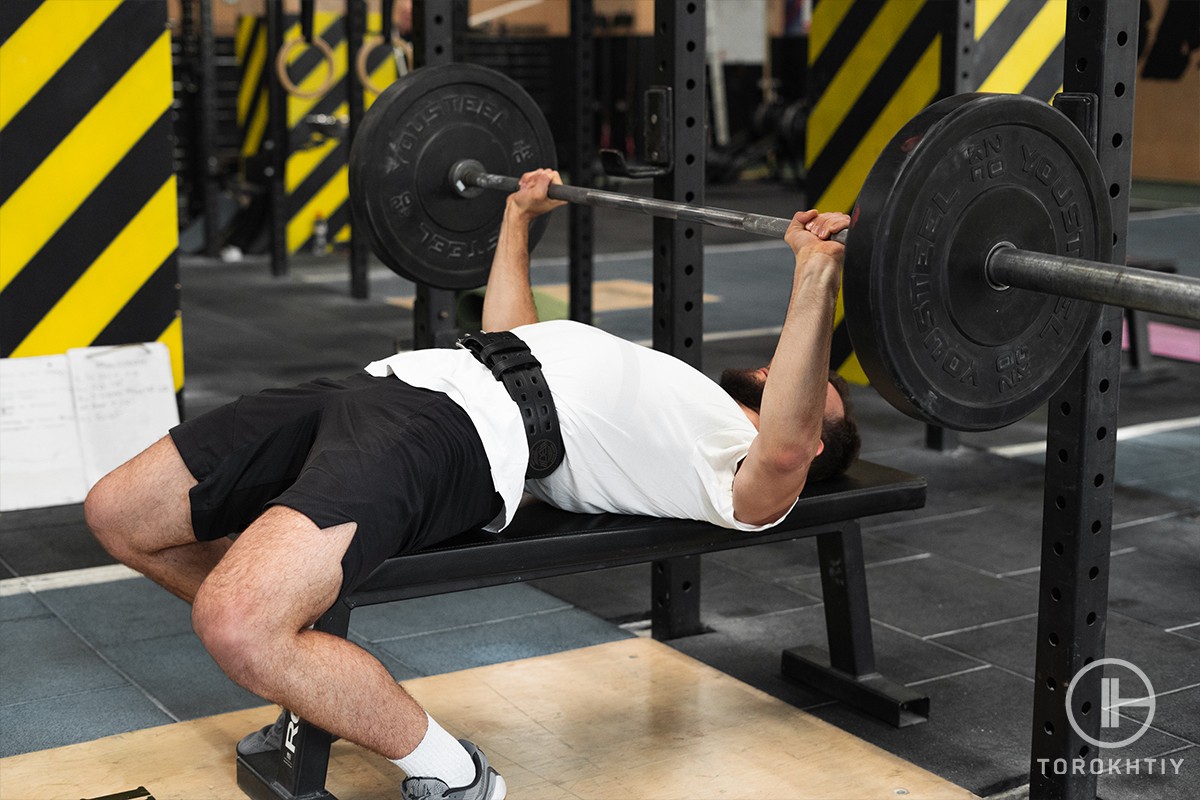
1. Thumb-side Wrist Pain
You might be noticing pain at the base of your thumb, and it can range from the occasional throbbing to sharp pain. Pain in this area is likely from too much radial deviation in, which happens more with a wider grip.
If you tend to have pain in this location and you notice it is worsening or severe, then it’s good to consult with a doctor as that might be a sign of damage to the scaphoid bone or associated cartilage.
2. Pinky-side Wrist Pain
In a similar fashion, you might experience pain on the other side of your wrist. This could be due to a triangular fibrocartilage injury. It’s more likely to be some kind of a long-term sprain/strain, which is common for people who either work with their hands or work out a lot.
3. Pain in the Palm
Carpal tunnel syndrome is a condition that is characterized by numbness, tingling, and potentially weakness and strophy of the hand muscles. It occurs when the median nerve is compressed as it travels through the tunnel formed by the bones and ligaments of the wrist (carpal tunnel).
4. Pain at the Back of the Wrist
Pain in this location is likely caused by repeated or sustained wrist extension under load. This is common with people whose job includes loads of heavy lifting, and it’s also more common with powerlifters.
Reasons for Pain Occurrence During Bench Press
There are several reasons why bench pressing might cause wrist pain or injuries. Let’s take a look at the most common ones.
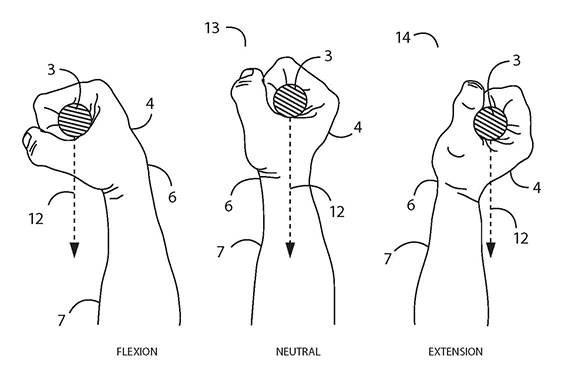
1. Placing the Bar on Your Fingers, Instead of Your Palms
If you place the bar too close to your fingers, it can lead to wrist pain while performing the exercise. Your hand has to act as a platform for the bar as you lower it down and bring it back up.
For your hands to become like a platform, you can’t grasp it with the top of your hand as this will put your wrist in an awkward position, namely in full extension. A high load supported at an end range of motion is likely to be uncomfortable for many joints, especially if you are not accustomed to it.
2. Using a Thumbless Grip or Just a Few Fingers
In the beginning, you have to wrap your fingers around the bar and then set it correctly on the heels of your hands. A thumbless grip is a bad idea on most exercises, and downright dangerous for the bench press.
During bench pressing, your entire hand helps you keep the bar secure, not only so that it doesn’t fall on you, but also for lifting efficiency. By not grasping the bar with your whole hand, you are not able to lock your wrist completely, which doesn’t allow you to transfer force as effectively.
🔻GRIP STRENGTH TRAINING PROGRAM
Struggling with Missed Lifts in Olympic Weightlifting?
Weak grips shouldn’t hinder your success.
Our specialized program, featuring 26 unique exercises and 18 workouts, focuses on strengthening essential hand muscles for Olympic weightlifters like you.
Don’t let your grip be the reason; start your journey to a stronger, more powerful lift today!
- 🌟 Targeted Grip Strengthening
- 🌐 Suitable for All Skill Levels
- 🔒 Lifetime Access – No Monthly Payments
Unleash your full potential. Click to transform your lifting game now!
3. Your Wrists Are Bent Back Too Far
As mentioned above, you have to remember to keep your wrists in some but probably not full extension; if they’re too far back, then the soft tissues in the wrist may get compressed/stretched and lead to wrist pain.
4. Your Grip is Too Wide
While grip width is up to your individual preferences, you should aim to have your forearms in a vertical orientation. If your grip is too wide, meaning your hands are close to the weight plates, the angle of your forearms is not perpendicular to the floor.
This puts your wrist into a radially deviated position which may become painful. Your triceps are less involved with a very wide grip, and it often causes shoulder pain. However, you might be able to lift more weight because the bar travels a shorter distance.
5. Using Too Much Weight
If the weight you’re trying to lift is too heavy for you then you may not be prepared for the forces on the wrist joint. This may result in pain and potential injuries.
As a lifter, you should look to progressively overload so that your forearms and hands become stronger and thus more able to support the weight effectively.
However, that won’t happen in a week or two; you will need to consistently lift for months in order to see proper results. You may also need to do extra grip/forearm strength exercises if you have recurring wrist pain or previous injuries.
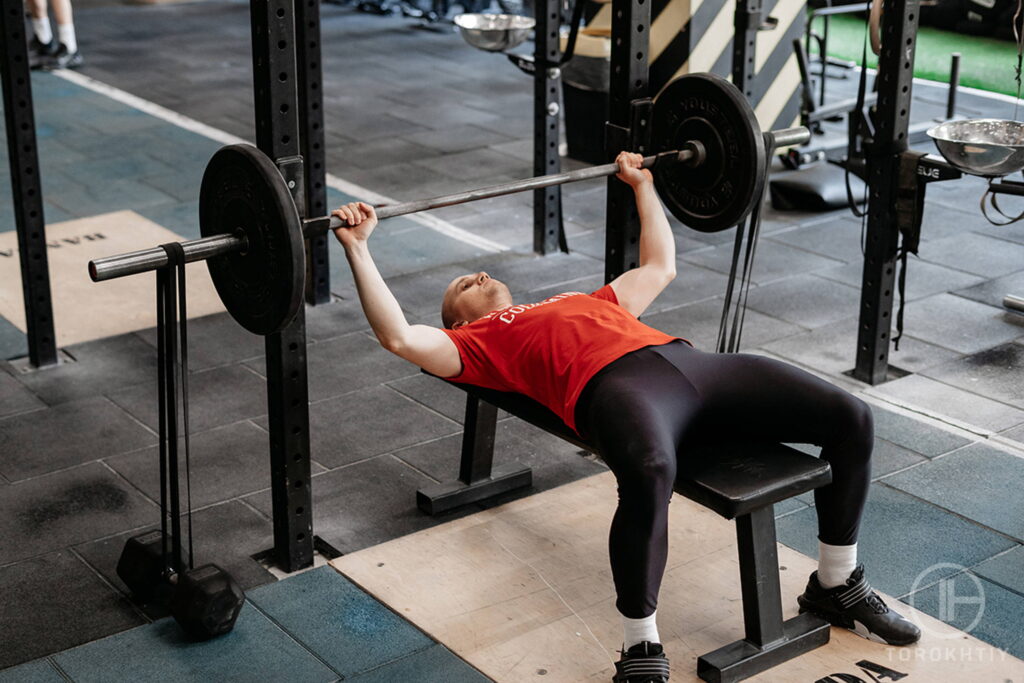
How to Prevent Wrist Pain from Bench Pressing
So far, you’ve learned why wrist pain occurs and what you can do to resolve this issue; however, now it’s time to discuss what you can do to prevent injuries from happening.
1. Lower the Weight
Often wrist pain or even small injuries can happen due to the fact that you’re trying to lift a heavier weight than what you can handle. That’s why, if you feel pain while performing the exercise you can try lowering the weight down by 10-20% and see if that removes the pain.
Often beginner lifters try to go for too much weight too soon, and their joints are simply not strong enough to handle the additional weight, so, if you take the weight down and work up to it, you might find that it helps get rid of wrist pain.
2. Use Wrist Wraps
Wrist wraps are a lifting accessory that can help you keep your wrist in a neutral position and they can provide it with additional support during your workouts. What’s vital here is to purchase a high-quality pair that can endure many sessions, and that truly supports the wrist joint.
Our recommendation is to go for the Warm Body Cold Body Premium Velcro pair as it’s made with great materials, truly tighten and supports the joint, and comes in several different options.
3. Maintain Proper Form
We’ve already talked about what proper form for bench pressing looks like. When it comes to the wrist, your main focus should be on putting them in a stable position and gripping the bar correctly.
With that said, when lifting, people often tend not to think about form and put their focus on lifting more weight instead.
However, if you want to protect yourself from future injuries, you should become one of the exceptions that put more effort into maintaining the correct positions than trying to boost your ego by lifting more than you can handle.
What To Do if You Started Feeling Pain in Your Wrist During Bench Press
If you start to feel pain while you’re working out, you have several options:
- Fix your technique to see if that causes an improvement.
- Lower the weight to see if that eliminates the pain and continue the workout by doing more reps with less weight.
- Stop the training session or move on to another exercise.
FAQ
Why Does My Wrist Hurt in Bench Press?
There are several reasons why your wrist might be hurting during the bench press. These include lifting more weight than you can handle and doing so with improper form. Wrist pain can also be caused by sprains, fractures, arthritis, or other old injuries that are getting inflamed because of the exercise.
How Do I Stop My Wrist from Bending on Bench Press?
You can stop your wrists from bending on the bench press by holding the bar lower in your hands or palms where they connect to your forearms, rather than higher with the middle of your palms.
If it’s problematic to keep your wrists straight, use less weight. It’s not worth sacrificing form for more resistance, and it can damage your wrists. Another option is using wrist wraps or wrist braces for additional support, but try to only use them when necessary so you do not become dependent.
Should I Wear Wrist Wraps When Benching?
If you experience pain frequently, then wearing wrist wraps when benching might be a great way for you to stabilize the wrist joints, provide them with additional support and potentially eliminate the pain and prevent injuries.
Conclusion
Getting wrist pain when bench pressing is fairly common amongst people who lift heavy and regularly.
And if it happens rarely, it shouldn’t really concern you all that much – just try to adjust the weight you’re lifting, your form, and use wrist wraps to give additional security to your joints. However, if you feel sharp pain, you should stop training and consider a visit to the doctor.
Have you experienced wrist pain during your lifting sessions and if yes, how did you deal with it? Share useful tips and tricks with us in the comments.
Also read:
- How To Use Wrist Wraps
- Best Wrist Wraps For Powerlifting
- Wrist Pain From Lifting
- How To Get Better At Handstands
- Best Women’s Wrist Wraps
- Rogue Wrist Wraps
- Best Functional Fitness Wrist Wraps
References:
- Wrist pain // Mayo Clinic: https://www.mayoclinic.org/diseases-conditions/wrist-pain/symptoms-causes/syc-20366213
Why Trust Us?
With over 20 years in Olympic Weightlifting, our team does its best to provide the audience with ultimate support and meet the needs and requirements of advanced athletes and professional lifters, as well as people who strive to open new opportunities and develop their physical capabilities with us.
By trusting the recommendations of our certified experts in coaching, nutrition, dietology, and sports training programming, as well as scientific consultants, and physiotherapists, we provide you with thorough, well-considered, and scientifically proven content. All the information given in the articles concerning workout programming, separate exercises, and athletic performance, in general, is based on verified data. We ensure that you can rely on our professionals’ pieces of advice and recommendations that can be treated as personalized ones which will benefit you and fully meet your needs.
The product testing process is described in more detail here
Author: David Sasha Schulz
Doctor of Chiropractic, BSc Human Biology, CSCS
Strength coach (CSCS) – 10 years
Sasha is a Chiropractor and Kinesiologist practicing in Kelowna, BC, Canada. He has been practicing Chiropractic since 2019, integrating manual therapy, strength training and programming principles, and nutritional strategies to get his patients optimal results. He currently scratches the competitive itch in fitness, and the occasional endurance race, and plays golf and snowboards for fun. He has an interest in all strength and fitness-related sports.

